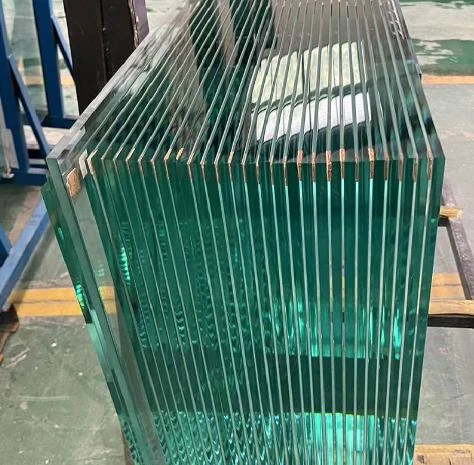The Allure of Glass Architectural Design A Reflection on Modern Building Aesthetics
In the realm of contemporary architecture, glass buildings have become synonymous with modernity and innovation. The sleek transparency of glass not only merges the indoor environment with the external world but also revolutionizes the way we think about space, light, and materials in urban design. With the increasing popularity of glass structures, it's imperative to explore the significance, advantages, and challenges that come with this architectural trend.
The Allure of Glass Architectural Design A Reflection on Modern Building Aesthetics
Moreover, the aesthetic appeal of glass buildings cannot be overstated. Their reflective surfaces harmonize with the ever-changing landscape, capturing the beauty of the surroundings while adding a touch of sophistication. Iconic examples include the Crystal Palace in London, which utilized glass to create a spectacular exhibition space in the 19th century, and the modern One World Trade Center in New York, which boasts a shimmering glass facade that pays homage to the skyline. Glass buildings often stand as symbols of progress and innovation, with their sleek designs defying traditional architectural norms, thus becoming landmarks in urban settings.
architecture glass building
However, despite the numerous benefits of glass architecture, challenges abound. One significant concern is energy efficiency. While extensive use of glass can maximize daylight, it can also lead to increased heat gain and loss, subsequently impacting heating and cooling costs. To address these issues, architects are now employing advanced glazing technologies, such as low-emissivity (low-e) glass, which reflects heat while allowing natural light to permeate. These innovations simultaneously enhance thermal performance and maintain the desired aesthetic qualities of glass architecture.
Another challenge pertains to privacy and security. Extensive glass surfaces can raise concerns about visibility and protection. To navigate this issue, architects often incorporate strategic design elements, such as frosted glass or spatial adaptations, to ensure both openness and privacy. The integration of landscaping, eloquently designed interiors, and strategically placed partitions can mitigate such concerns while still embracing transparency and light.
Lastly, sustainability has emerged as a pivotal consideration in architectural design, and glass buildings are no exception. Addressing the environmental impact of glass production and its contribution to urban heat islands is critical. Many architects and developers are now seeking ways to use recycled materials and implement green building practices, such as green roofs and solar panels, to create more sustainable glass structures.
In conclusion, glass buildings epitomize the eloquent convergence of artistry, functionality, and modern technology in contemporary architecture. Their ability to transform urban landscapes by inviting light and air while presenting a canvas for architectural creativity is unparalleled. As we look toward the future, continued innovations in glass construction and technology promise to enhance the positive attributes of glass architecture while addressing the challenges it poses. The glass building trend is more than just an aesthetic choice; it embodies a larger philosophy of transparency, connectivity, and environmental consciousness—an inspiring vision for urban development in the 21st century.
 Afrikaans
Afrikaans  Albanian
Albanian  Amharic
Amharic  Arabic
Arabic  Armenian
Armenian  Azerbaijani
Azerbaijani  Basque
Basque  Belarusian
Belarusian  Bengali
Bengali  Bosnian
Bosnian  Bulgarian
Bulgarian  Catalan
Catalan  Cebuano
Cebuano  Corsican
Corsican  Croatian
Croatian  Czech
Czech  Danish
Danish  Dutch
Dutch  English
English  Esperanto
Esperanto  Estonian
Estonian  Finnish
Finnish  French
French  Frisian
Frisian  Galician
Galician  Georgian
Georgian  German
German  Greek
Greek  Gujarati
Gujarati  Haitian Creole
Haitian Creole  hausa
hausa  hawaiian
hawaiian  Hebrew
Hebrew  Hindi
Hindi  Miao
Miao  Hungarian
Hungarian  Icelandic
Icelandic  igbo
igbo  Indonesian
Indonesian  irish
irish  Italian
Italian  Japanese
Japanese  Javanese
Javanese  Kannada
Kannada  kazakh
kazakh  Khmer
Khmer  Rwandese
Rwandese  Korean
Korean  Kurdish
Kurdish  Kyrgyz
Kyrgyz  Lao
Lao  Latin
Latin  Latvian
Latvian  Lithuanian
Lithuanian  Luxembourgish
Luxembourgish  Macedonian
Macedonian  Malgashi
Malgashi  Malay
Malay  Malayalam
Malayalam  Maltese
Maltese  Maori
Maori  Marathi
Marathi  Mongolian
Mongolian  Myanmar
Myanmar  Nepali
Nepali  Norwegian
Norwegian  Norwegian
Norwegian  Occitan
Occitan  Pashto
Pashto  Persian
Persian  Polish
Polish  Portuguese
Portuguese  Punjabi
Punjabi  Romanian
Romanian  Russian
Russian  Samoan
Samoan  Scottish Gaelic
Scottish Gaelic  Serbian
Serbian  Sesotho
Sesotho  Shona
Shona  Sindhi
Sindhi  Sinhala
Sinhala  Slovak
Slovak  Slovenian
Slovenian  Somali
Somali  Spanish
Spanish  Sundanese
Sundanese  Swahili
Swahili  Swedish
Swedish  Tagalog
Tagalog  Tajik
Tajik  Tamil
Tamil  Tatar
Tatar  Telugu
Telugu  Thai
Thai  Turkish
Turkish  Turkmen
Turkmen  Ukrainian
Ukrainian  Urdu
Urdu  Uighur
Uighur  Uzbek
Uzbek  Vietnamese
Vietnamese  Welsh
Welsh  Bantu
Bantu  Yiddish
Yiddish  Yoruba
Yoruba  Zulu
Zulu 

